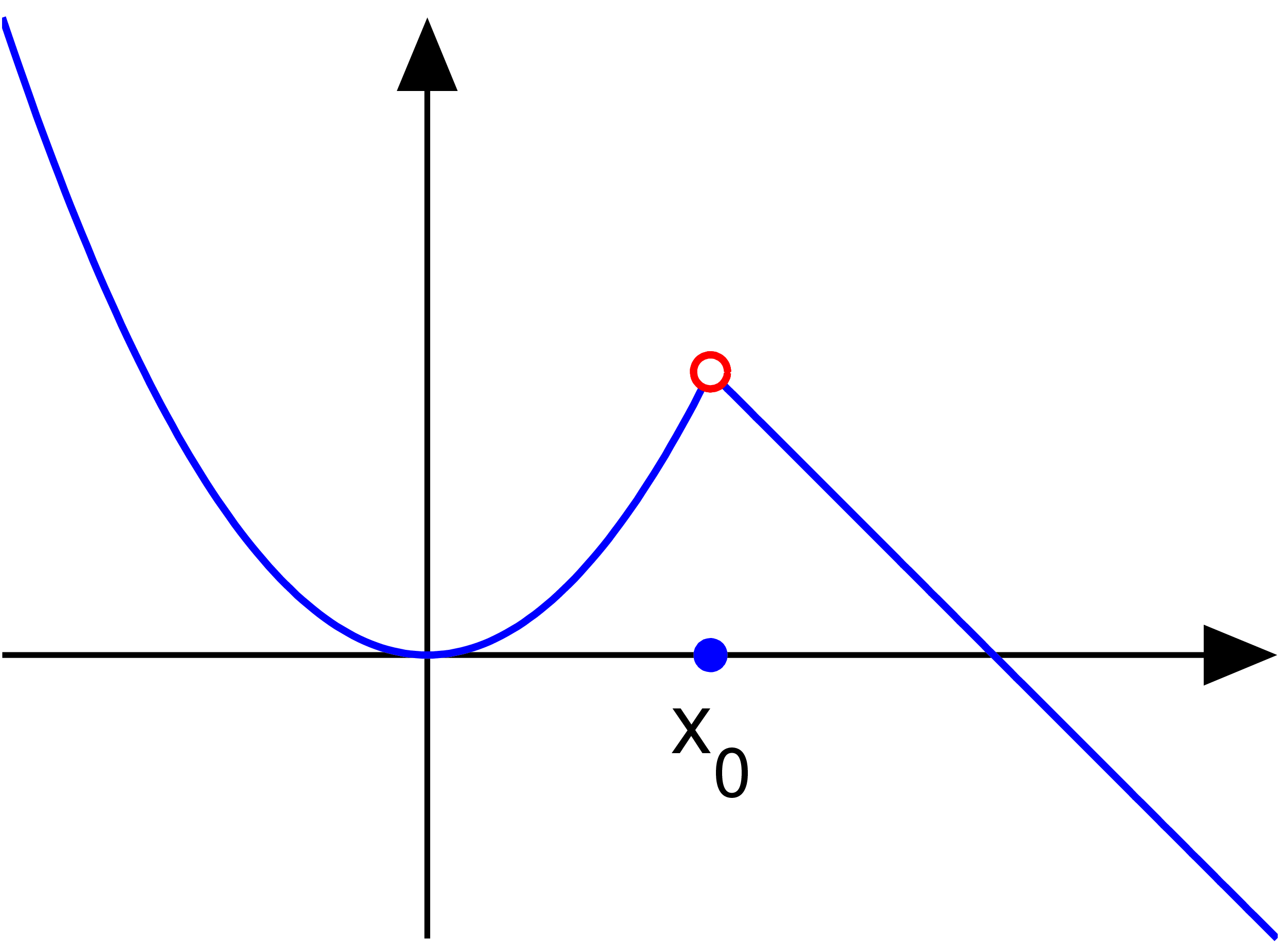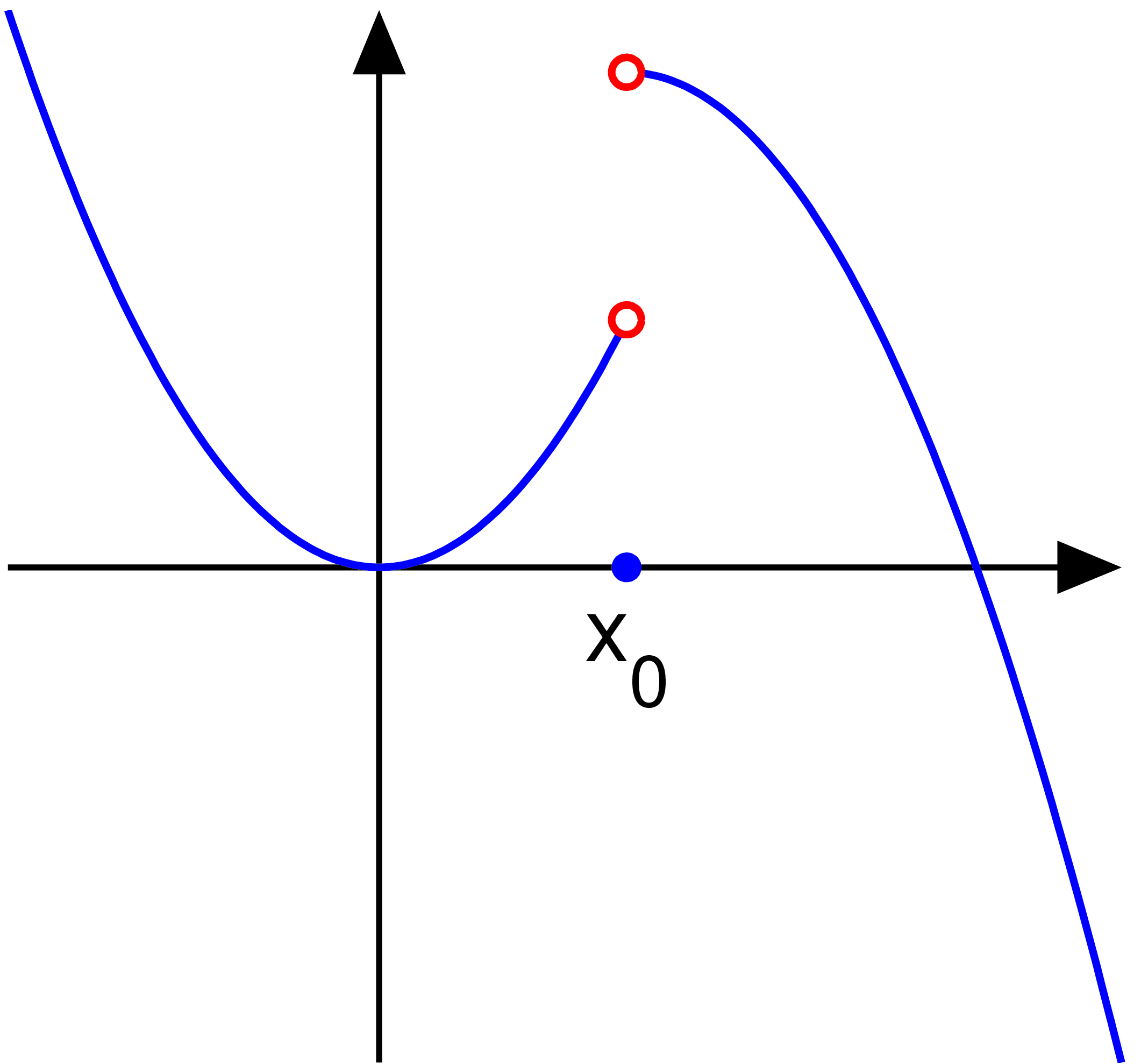MA441- LEC 6 -1.8 continuity.
By KWANG
Goal
- Limit Laws and their restrictions
Continuity at \(x=a\)
A function \(f\) is continuous at a number \(a\) if
\[
\lim_{x\to a}f(x)=f(a)
\]
Otherwise, we say \(f\) is discontinuous at \(a\)
Remark.
- \(f(a)\) is defined.
- \(\lim_{x\to a}f(x)\) exists
- \(\lim_{x\to a}f(x)=f(a)\)
Classification of discontinuities
| Removable discontinuity (Hole) | Jump discontinuity (Jump) | Essential discontinuity |
|---|---|---|
 |
 |
 |
Essential discontinuity - when one of onsided limits does not exist or infinite.
Example 1.
Where are each of the following functions discontinuous?
\( f(x)=\frac{x^2-x-2}{x-2}\)
\( f(x)= \left\{ \begin{array}{ll} \frac{1}{x} & x\neq 0\\ 1 & x=0 \end{array} \right. \)
3. \( f(x)= \left\{ \begin{array}{ll} \frac{x^2-x-2}{x-2}& x\neq 2\\ 1 & x=2 \end{array} \right. \)
continuous from the right
A function \(f\) is continuous from the right at a number \(a\) if
\[ \lim_{x\to a^+} f(x)=f(a)\]
continuous from the left
A function \(f\) is continuous from the left at a number \(a\) if
\[ \lim_{x\to a^-} f(x)=f(a)\]
continuity on a a interval
A function \(f\) is continous on an interval if it is continuous at every number in the interval(interior).
If \(f\) is defined only on one side of an endpoint of the interval(boundary),
we understand continous at the endpoint to mean continuous from the right or continuous from the left.
Remark
We should handle two endpoints carefully.
Example 2.
Check whether the function \(f(x)=1-\sqrt{1-x}\) is continuous on the interval \([-1,1]\).
(Interior points) \(-1 < a < 1\)
(End points) \( a=-1 \) or \( a=1 \)
Theorem
If \(f\) and \(g\) are continuous at \(a\) and \(c\) is a constant, then the following functions are also continuous at \(a\),
- \( f+g \)
- \( f-g \)
- \( cf \)
- \( fg \)
- \(\frac{f}{g}\) if \(g(a)\neq 0\).
Corollary
- Any polynomial is continuous on \(\mathbb{R} = (-\infty,\infty)\)
- Any rational function is continuous on its domain.
Remark
- Radical function is continuous on the domain.
- Trigonometric functions is continuous on the domain.
Example 3
\[ \lim_{x\to -2} \frac{x^3+2x^2-1}{5-3x} \]
Example 4
On what intervals is each function continuous?
- \(f(x)=x^{100}-2x^{37}+75\)
- \(g(x)=\frac{x^2+2x+17}{x^2-1}\)
- \(h(x)=\sqrt{x}+\frac{x+1}{x-1}-\frac{x+1}{x^2+1}\)
Example 5. Evaluate
\[ \lim_{x\to \pi} \frac{\sin{x}}{2\cos{x}}\]
Theorem
If \(f\) is continuous at \(b\) and \(\lim_{x\to a} g(x)=b\), then \[ \lim_{x\to a}f(g(x)) = f(\lim_{x\to a} g(x))=f(b)\] In other words, a evaluation of a continuous function commutes with the limit process.
Corollary 1
\[ \lim_{x\to a} \sqrt[n]{g(x)}=\sqrt[n]{\lim_{x\to a}g(x)} \]
if \(\lim_{x\to a} g(x)=b~>0\)
Corollary 2
If \(g\) is continuous at \(a\) and \(f\) is continuous at \(g(a)\), then the composite function \(f\circ g\) is continuous at \(a\).
Example 6
Where are the following functions continuous?
- \(h(x)=sin(x^2)\)
- \(F(x)=\frac{1}{\sqrt{x^2+7} -4}\)